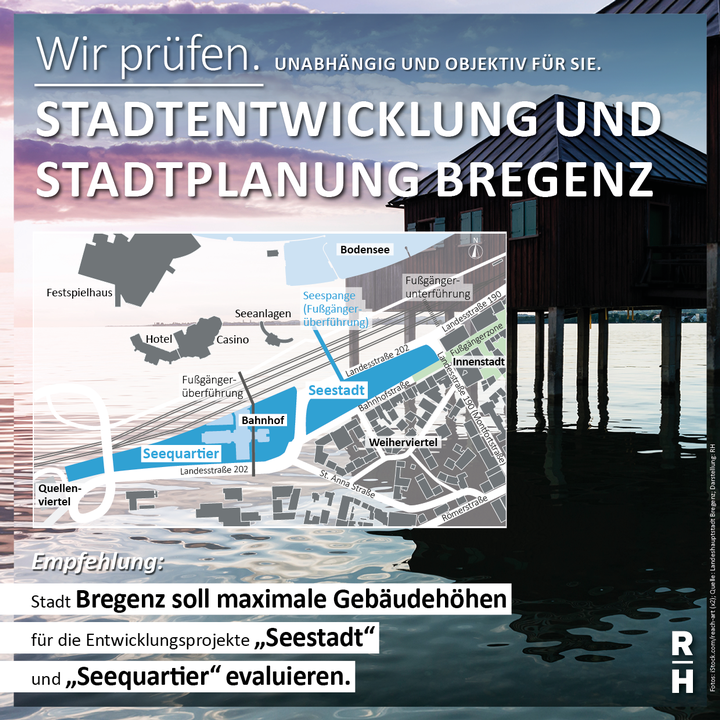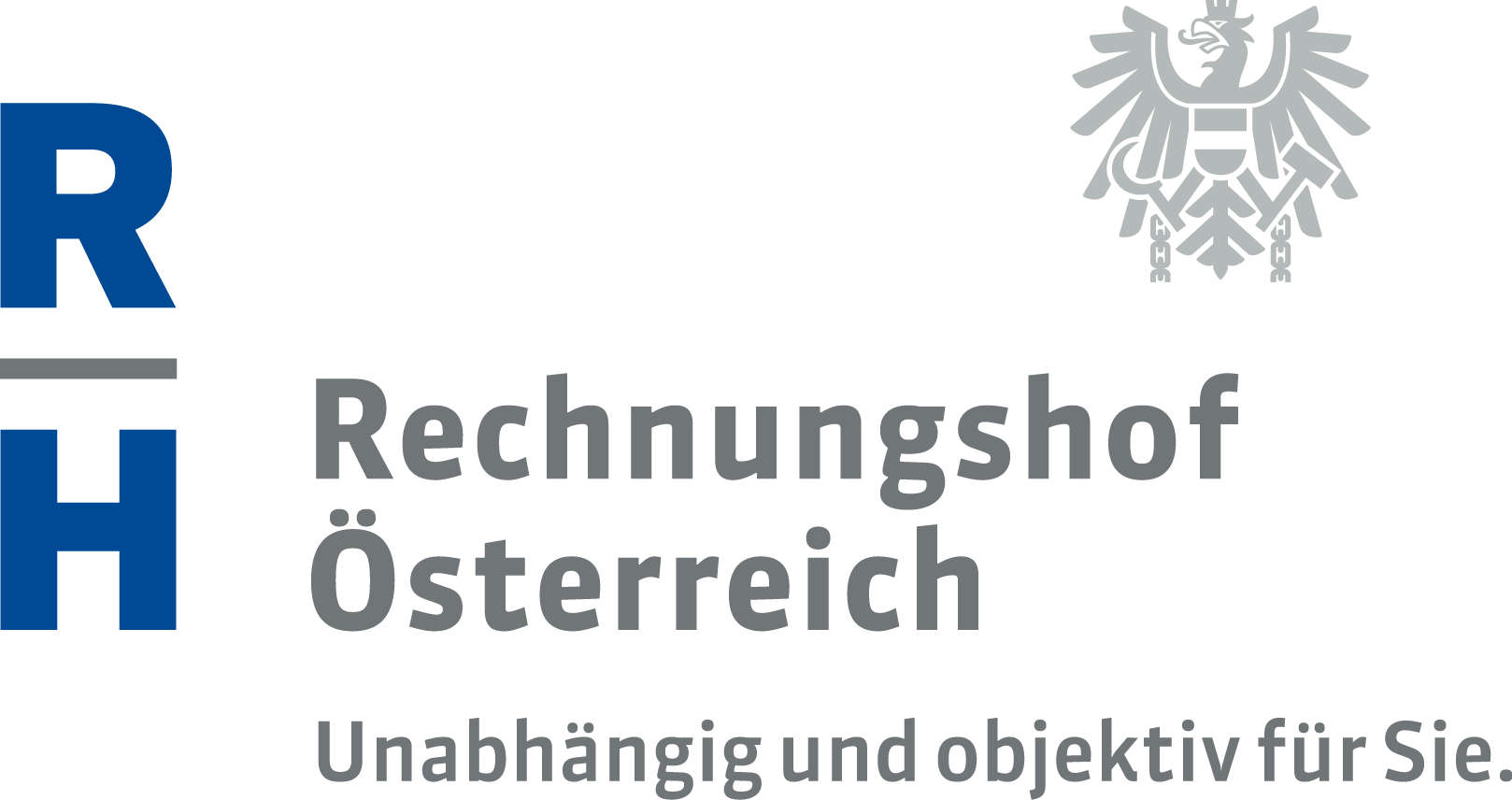The ACA reveals difficulties as regards urban development projects in Bregenz

In its report published today on "Urban Development and Urban Planning in Bregenz", the Austrian Court of Audit (ACA) reveals difficulties as regards the planning of the city areas Seestadt and Seequartier in Bregenz (Vorarlberg). The projects – which are currently in the planning stage – are carried out by private businesses. In essence, the city authorities can exert their influence only as far as sovereign policies are concerned, namely as regards the land designation and land use plans.
In the period of 2007 to 2009, the trend-setting master plan for the Seestadt area was basically fit for purpose. However, compared to the master plan, the city allowed for considerable changes to the projects in the further course of their implementation. As regards the objectives of the general transport concept of 2014 on the choice of the means of transport, the objectives were largely attained. The audit period essentially spanned the years from 2013 through 2018.
Important transport hub
In Bregenz, the Seestadt and Seequartier areas are – with the exception of the train station – the last large-scale greenfield development areas close to the city centre. For decades, the Seestadt area, which is the size of 9,000 square metres, has been the subject of plans. In 2007, the adjacent Seequartier, which is 19,000 square metres large and owned by the ÖBB-Infrastruktur Aktiengesellschaft, was included in the plans: a retail, office and residential quarter as well as a modern transfer point for public transport including a new train station building were to be created – an “urban city centre” with open spaces, which forms a link between the city centre, the shore of Lake Constance, the Festspielhaus district, the train station and the neighbouring districts.
Bregenz has only limited influence
At the time of the audit, both projects were carried out by two private companies and/or investor groups respectively: company Q and company S. Prior to the transferral of shares, company S was publicly owned. Company S has secured the rights to exploit and commercially use the properties of Seestadt. Due to the lack of own building sites, the city authorities could, in essence, exert their influence only as far as sovereign policies were concerned – in particular as regards the land designation and the land use plans – and through private-law agreements with the companies.
The city of Bregenz, the company S and the Austrian Federal Railways (ÖBB) commissioned a master plan for the Seestadt area. The master plan for the Seestadt area for the period of 2007 to 2009 was basically fit for purpose. However, the ACA critically notes that – apart from the maximum building heights - the city failed to set any targets with regard to building density or a minimum size of public spaces. For the development of the two areas, the city incurred expenses of about EUR 876,000 in the period from 2008 to 2018.
Permissible building heights were increased
The city changed the land designation and land use plans, which were based on the master plan, several times. This resulted in particular from detailed and/or amended plans, including those of the companies. Between 2009 and 2015, the city successively raised the maximum heights of buildings. For the Seestadt project, it reduced the areas with public usage rights by almost 40 per cent. The minimum proportion of residential space was also reduced for the Seestadt project. In contrast, the areas designated for retail were significantly larger than recommended in the master plan. As regards complex endeavours that have a public impact, the ACA considers a coordinated approach between the city authorities and the project applicants as generally appropriate. However, the framework conditions should be defined via the land designation and land use plans, which are sovereign spatial planning instruments.
The ACA recommends to the city of Bregenz to evaluate the maximum height of buildings for the Seestadt and the Seequartier, in particular as regards their compatibility with the existing city structure. As far as the further plans for the Seestadt area are concerned, the city authorities should furthermore pursue a higher share in areas available for public use and evaluate the size of the designated retail space and the share in residential area.
The objectives of the general transport concept were largely attained
In the framework of its audit, the ACA also looked into the city’s objectives related to urban planning and transport. It noted that the objectives of the general transport concept 2014 as regards the choice of the means of transport were largely attained. The motorized individual transport, for example, decreased from 37 per cent in 2008 to 30 per cent in 2017. In 2017, the share in public transport as well as the transport by bike and foot amounted to 63 per cent and was clearly above the average (51 per cent) of the larger municipalities in the central area of Vorarlberg.
The city refrained from collecting secondary residence taxes
Bregenz did not collect any secondary residence taxes at the time of the audit. This was on the grounds that the collection of data concerning the actual use of residences necessary for such taxation would create a high administrative burden. The secondary residence tax, however, is an adequate instrument to attain spatial planning objectives, since properties used as holiday accomodations are not on offer on the general housing market. Furthermore, the city missed out on a compensation for costs generated by secondary residences. The ACA acknowledges the city authorities' efforts to obtain a better enforceable provincial regulation.
- pdf Datei:
- 3,728.8 KB
- Umfang:
- 122 Seiten
Report: Urban Development and Urban Planning in Bregenz (in German)
From October 2018 to June 2019, the ACA carried out an audit on the urban development and urban planning of the provincial capital Bregenz. The audit aimed at collating the objectives and the specific challenges of urban development and urban planning and at assessing the organization, the instruments used, the attainment of objectives, the coordination with the surrounding municipalities and the management of projects in the Seestadt area.


